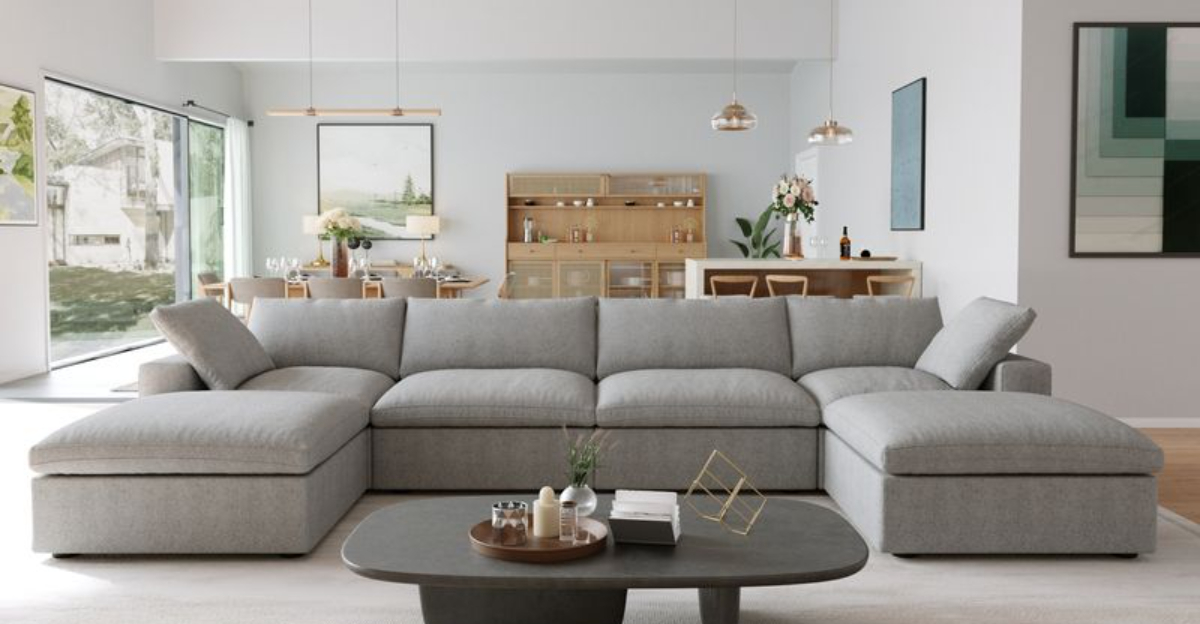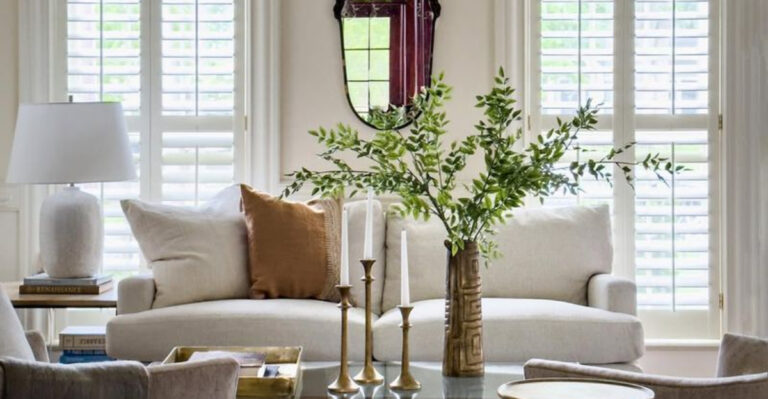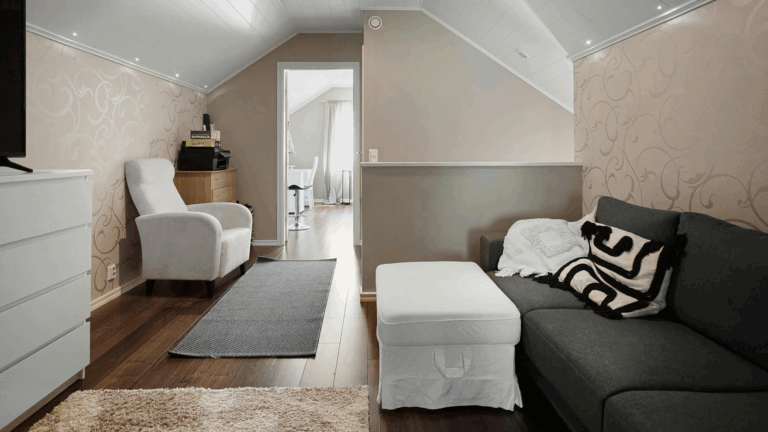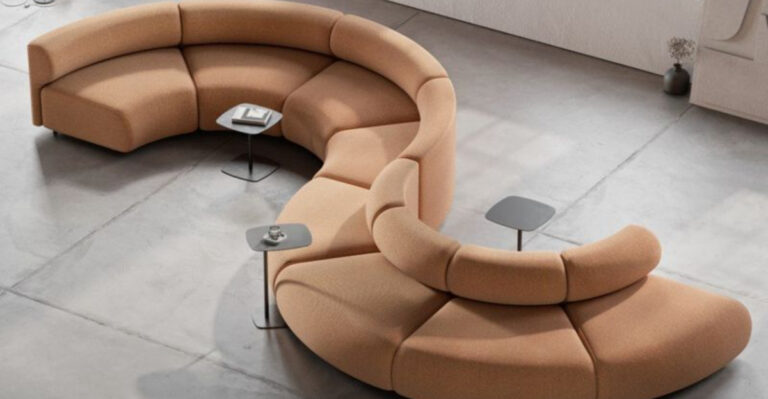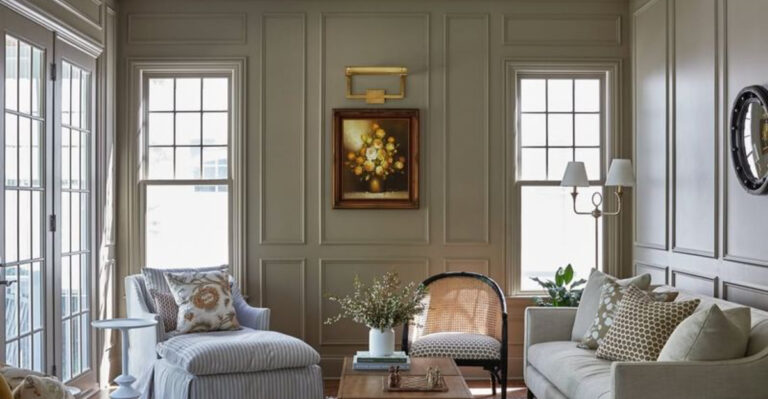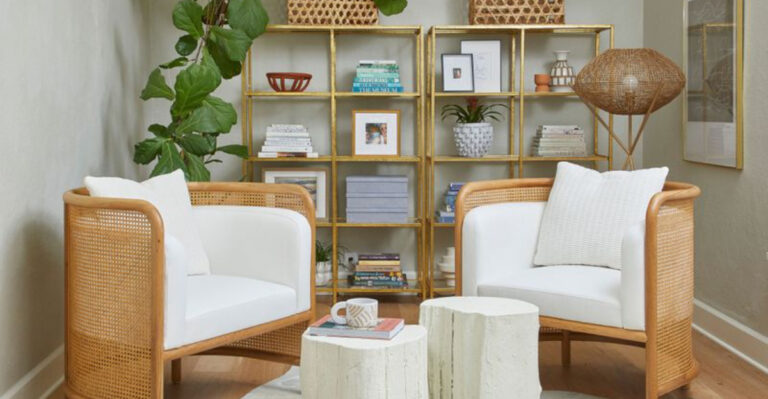9 Living Room Items Designers Never Buy Secondhand (And 9 Things They Avoid At All Costs)
I used to scroll through perfectly styled living rooms and wonder why mine never quite had that polished, effortless vibe. Turns out, designers have a few unspoken rules, especially when it comes to what they buy new, what they thrift, and what they avoid entirely.
Once I started paying attention to those choices, everything changed. Whether you’re decorating with a tight budget or finally splurging on your dream setup, knowing what’s worth it (and what’s not) can save you serious regret.
Ready to find out what designers swear by and what they refuse to let through the front door?
1. Upholstered Sofas
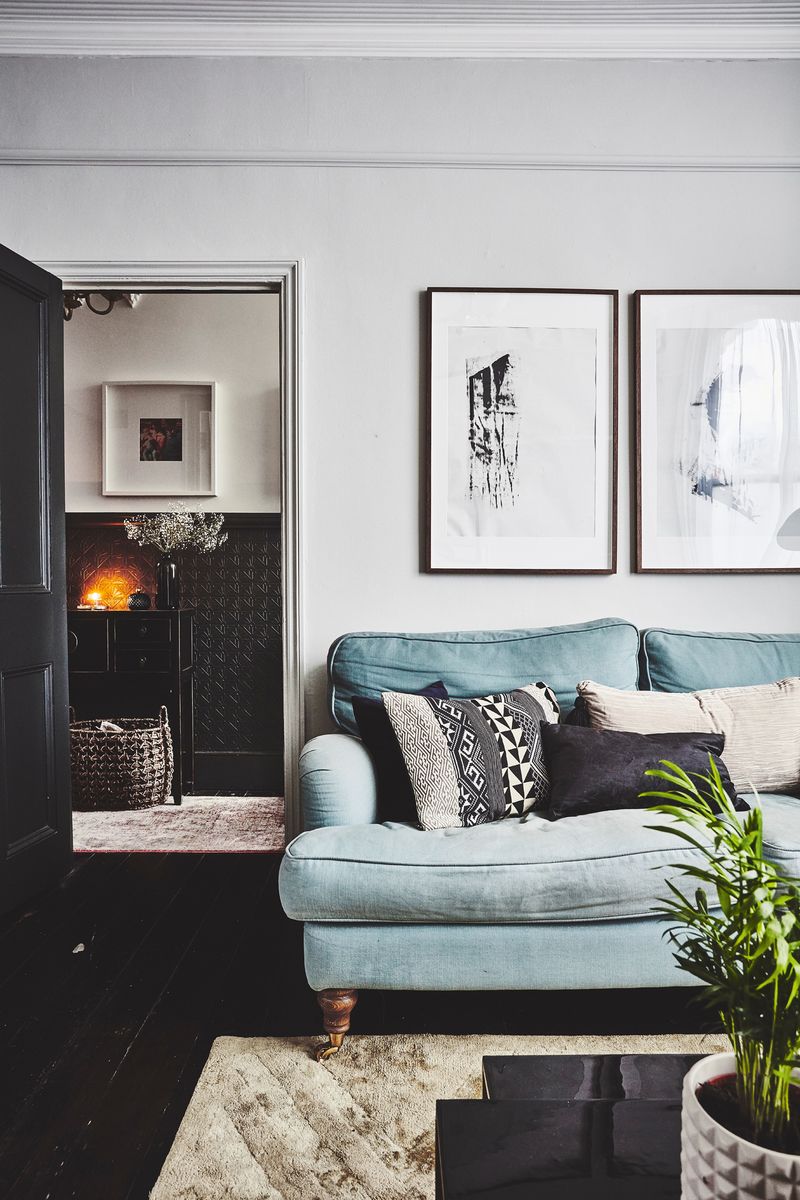
Someone else’s sofa might come with unwanted souvenirs – think bedbugs, mysterious stains, or that lingering smell of someone’s 14 cats. Professional designers run the other way when they spot a used couch.
Even if it looks clean, fabric upholstery absorbs years of sweat, spills, and whatever else the previous owner did while Netflix-binging.
Plus, the internal structure could be compromised without visible signs. Springs might be one sit-down away from poking through!
2. Mattresses And Pillows
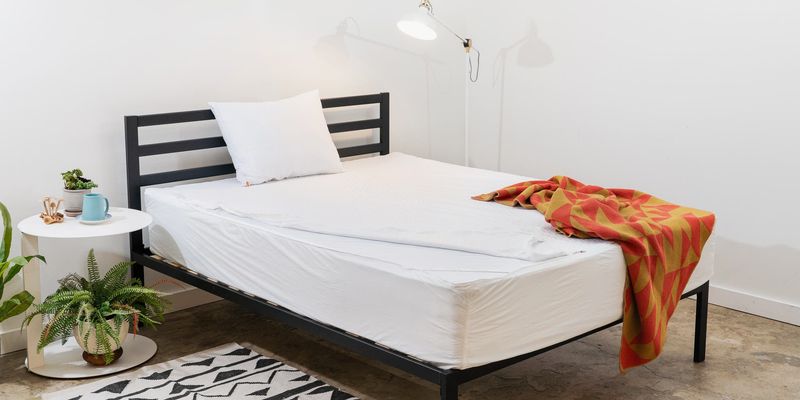
Buying a used mattress is like wearing someone else’s underwear – just no. These items collect dead skin cells, dust mites, and bodily fluids that no amount of cleaning can fully remove.
Designers know that quality sleep affects everything, including how you enjoy your living spaces. The average person spends a third of their life in bed, making this a non-negotiable new purchase.
Your future self will thank you for not trying to save a few bucks on something that touches your face for hours.
3. Particle Board Furniture
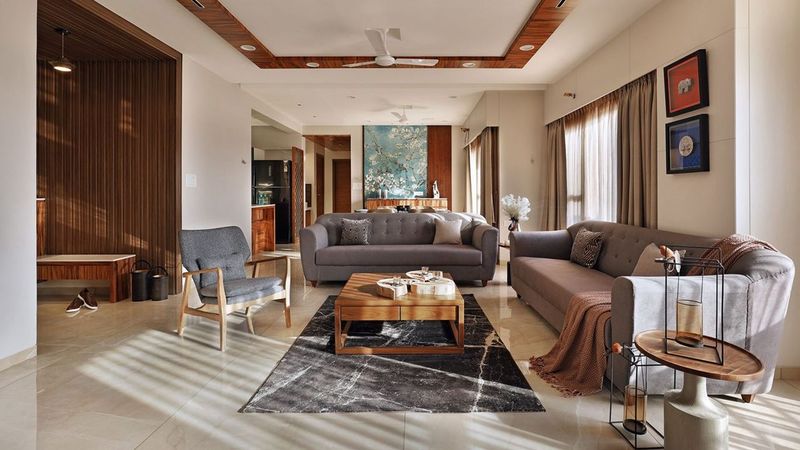
Those cheap bookcases from big box stores? They’re basically sawdust held together with glue and prayers. Designers avoid particle board like it’s carrying the plague.
This material swells with moisture, can’t handle weight, and typically falls apart after one move. Even when new, it’s a false economy.
The corners chip, the veneer peels, and suddenly your living room looks like a college dorm. Invest in real wood instead – it might cost more upfront but will still look good when particle board is long gone.
4. Area Rugs
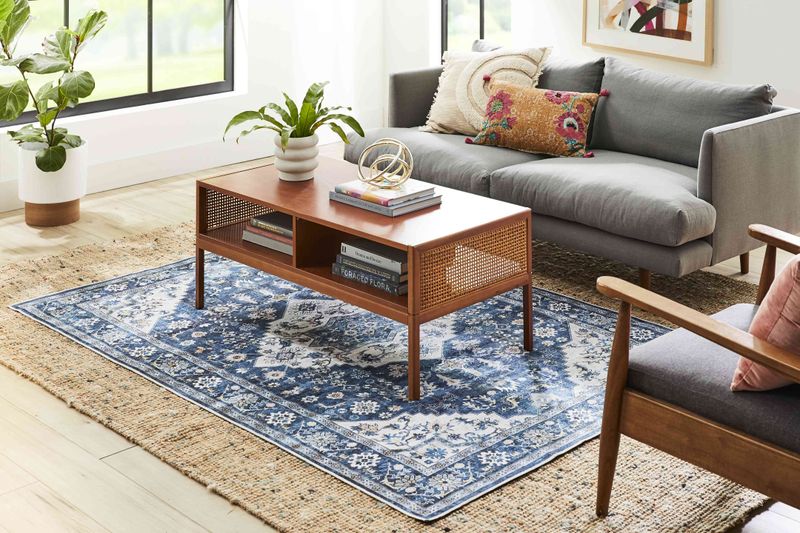
Used rugs might look fine on the surface, but they’re hiding a multitude of sins underneath. They’ve absorbed everything from pet accidents to spilled wine to years of foot traffic from strangers.
Professional cleaning rarely reaches deep fibers where allergens and bacteria make themselves at home. Designers especially avoid secondhand rugs for clients with allergies or young children who play on the floor.
Some vintage rugs are exceptions if properly cleaned, but generally, this is one item worth buying fresh for your peace of mind.
5. Vintage Electronics
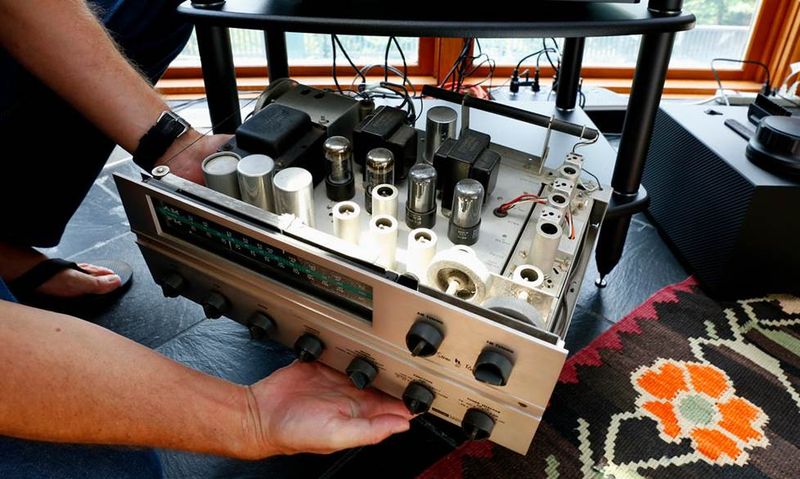
That cool retro TV might look amazing in photos, but designers know old electronics are fire hazards waiting to happen. Outdated wiring doesn’t mix well with modern power needs.
Beyond safety concerns, older electronics guzzle electricity like a thirsty camel. Your nostalgic find could double your utility bills! Not to mention, replacement parts are nearly impossible to find when (not if) something breaks.
Stick to modern tech with retro-inspired designs if you want that vintage vibe without the headaches.
6. Cribs And Children’s Furniture
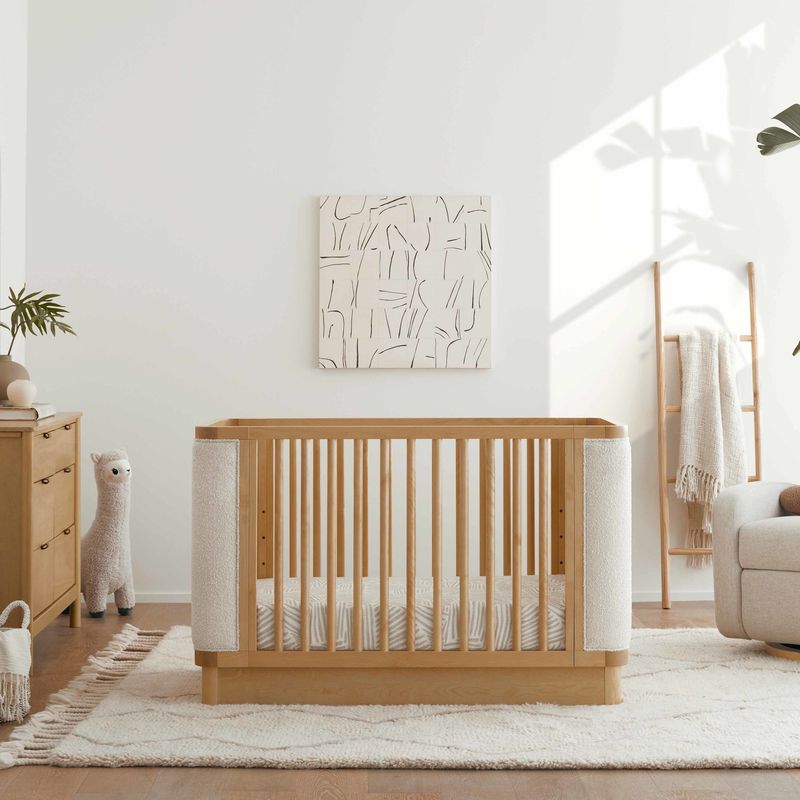
Hand-me-down cribs might seem practical, but safety standards change faster than baby fashion trends. What was perfectly safe five years ago might be banned today.
Designers insist on new children’s furniture, especially items used in living spaces where families gather. Recalls happen regularly, and older items may contain lead paint or dangerous design flaws.
Your sister’s crib might have sentimental value, but it’s not worth risking your little one’s safety just to save money or honor tradition.
7. Lamps Without Rewiring
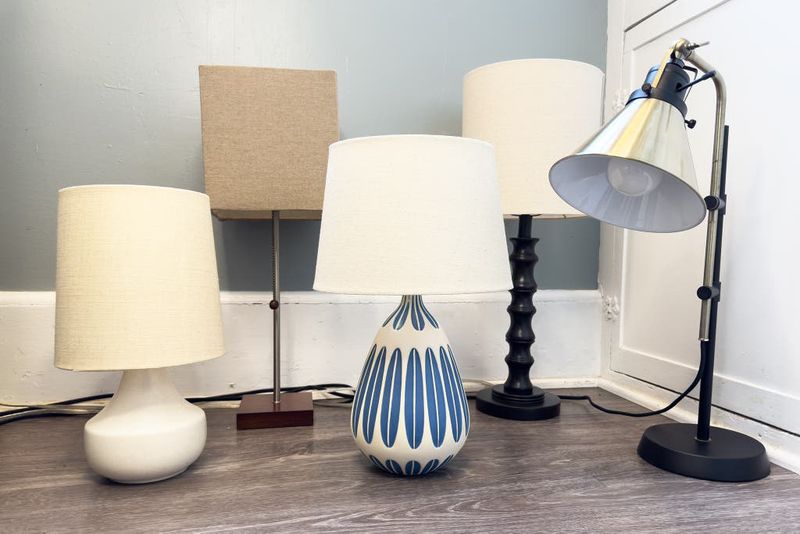
That gorgeous vintage lamp might light up your Instagram, but without proper rewiring, it could literally light up your house – and not in a good way! Frayed wires and outdated electrical components pose serious fire risks.
Designers often buy vintage lamp bases but insist on professional rewiring before installation. The cost of rewiring can sometimes exceed the price of a new lamp altogether.
If you’re not willing to invest in proper electrical updates, stick to new lighting that mimics vintage styles without the dangerous innards.
8. Antique Baby Items
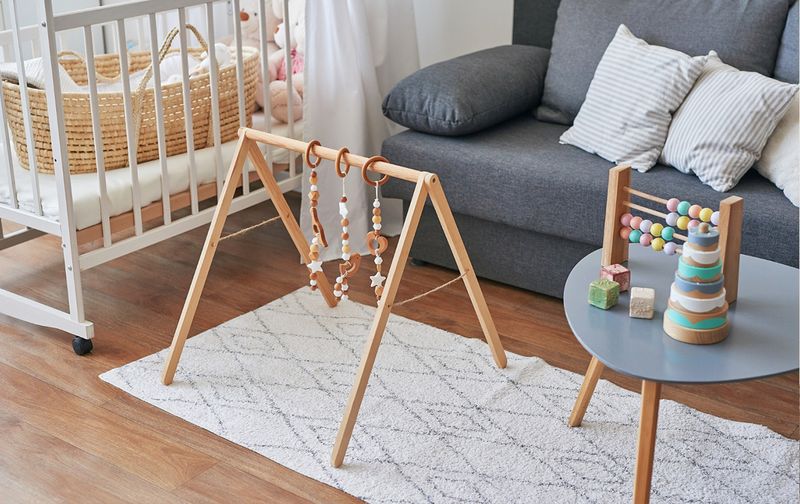
That charming antique high chair might look perfect in your farmhouse-style living room, but designers know it’s a safety nightmare. Old baby items rarely meet modern safety standards and often contain lead paint or dangerous design features.
Items like vintage toy chests with heavy lids can cause injuries, while antique playpens might have dangerous spacing between slats.
If you love the look, display these items high on shelves as decor only. Never risk using outdated baby equipment just because it matches your aesthetic vision.
9. Bed Linens And Throws
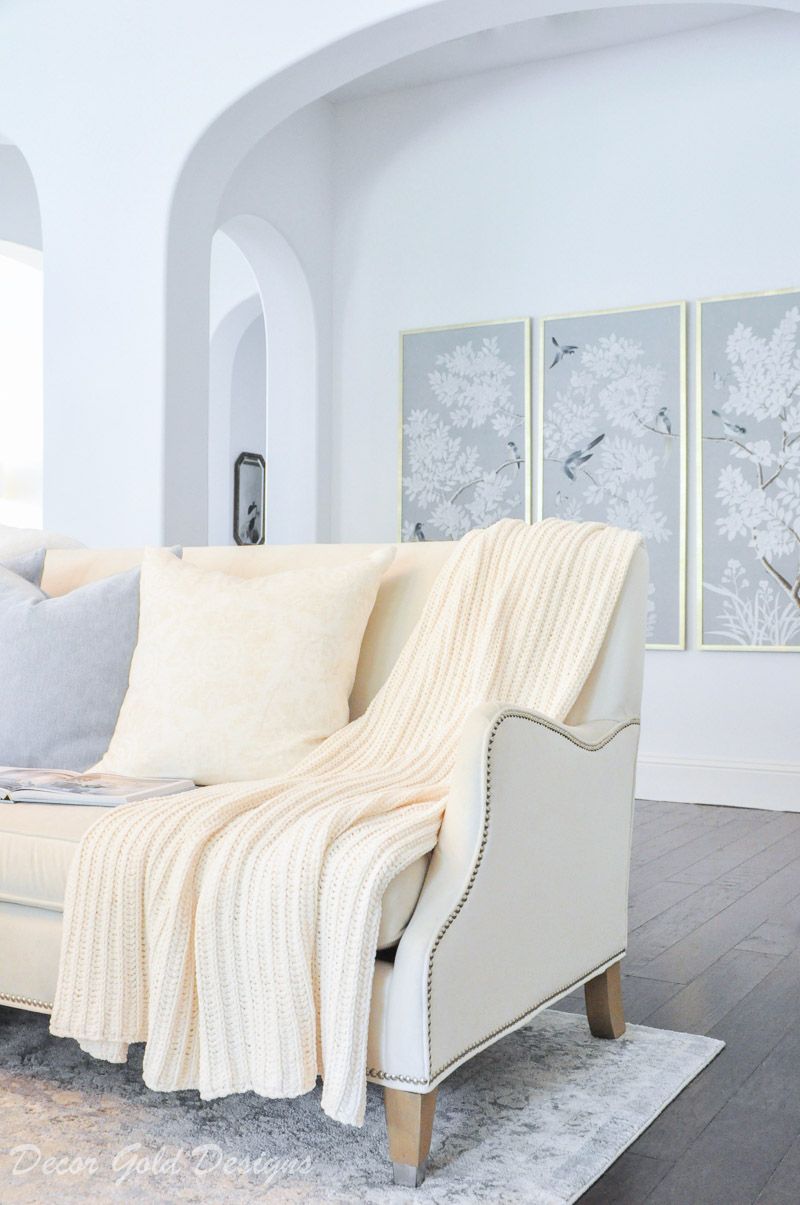
Used bedding is a big no-no for designers, even for decorative purposes in living spaces. Fabric items absorb everything from body oils to dust mites, and some stains never truly come out despite washing.
While vintage quilts can sometimes be exceptions if professionally cleaned, most designers recommend new textiles for anything that touches skin.
This includes decorative throws on sofas and accent pillows. The ick factor aside, new linens bring fresh colors and textures that can’t be matched by items that have been washed hundreds of times.
1. Overstuffed Furniture
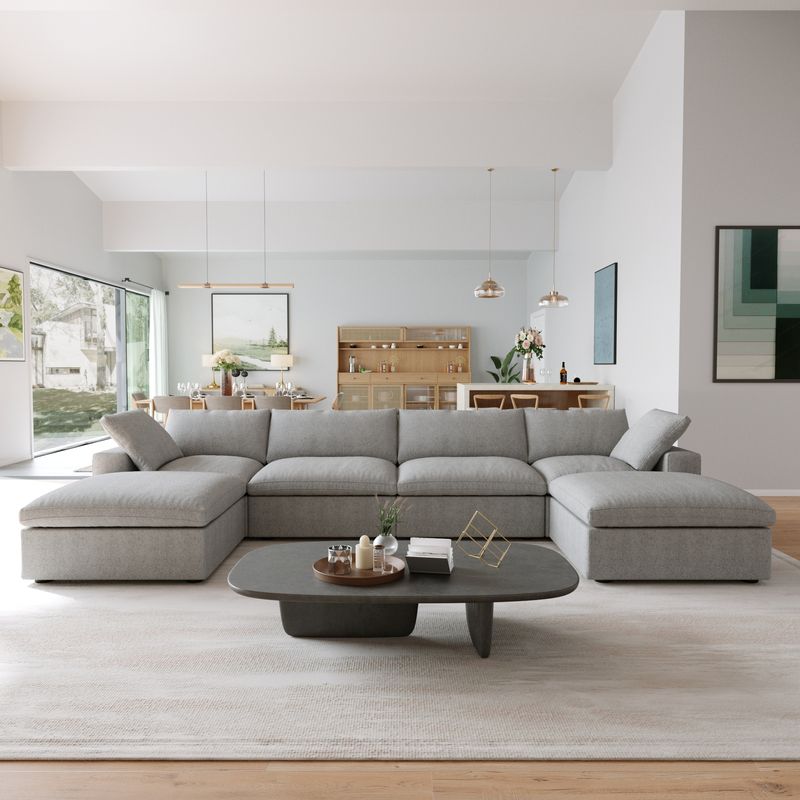
Designers run screaming from those massive sectionals that swallow up rooms like hungry hippos! These living room monsters might seem cozy, but they’re proportion enemies that make spaces feel cramped and chaotic.
Scale matters tremendously in design. A too-big sofa throws everything off balance, like wearing shoes three sizes too large.
Good designers opt for appropriately sized seating that allows for conversation and movement. Your living room should feel like a well-choreographed dance, not a wrestling match with furniture.
2. Matching Furniture Sets
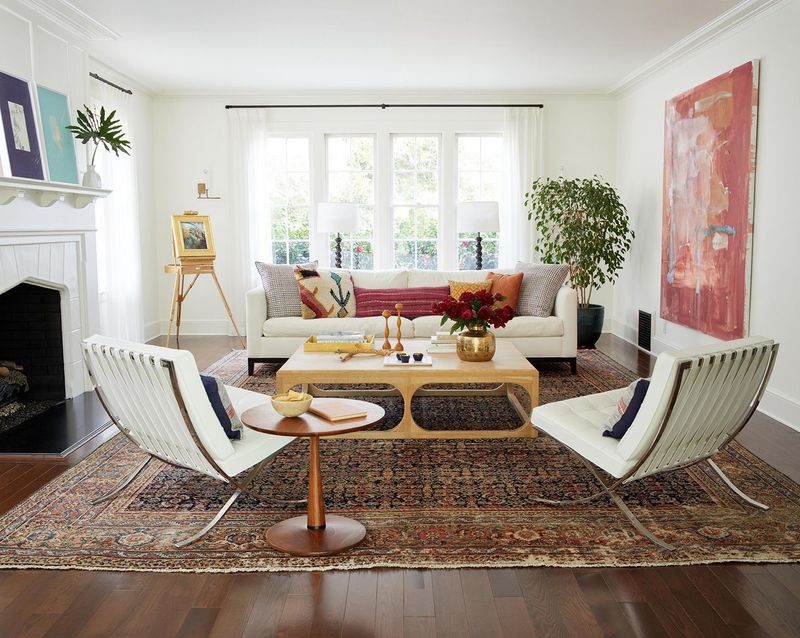
Nothing screams “I bought everything from the showroom floor” like those matchy-matchy living room sets. Designers avoid these cookie-cutter collections that make homes look like furniture store displays.
Great rooms tell stories through pieces collected over time, not ordered all at once from a catalog. Mix wood tones, combine different textures, and blend styles for spaces that feel authentic.
Your coffee table doesn’t need to be twins with your end tables! This matching madness is the design equivalent of wearing identical outfits with your spouse.
3. Wall-To-Wall Carpeting
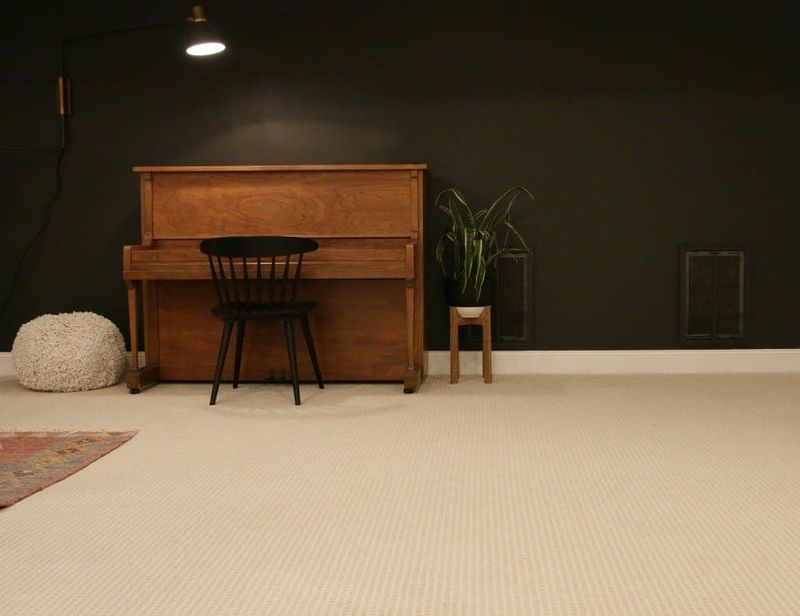
Designers treat wall-to-wall carpeting like it’s radioactive waste. This flooring choice traps allergens, stains permanently, and dates your space faster than a newspaper headline.
Hard flooring with area rugs offers more flexibility, easier cleaning, and better longevity. Spill red wine on hardwood? Wipe it up. Spill it on carpet? Call the real estate agent because you’re moving!
Plus, carpet replacement is disruptive and costly compared to refinishing hardwood or simply switching out an area rug when trends change.
4. Fake Plants That Look Fake
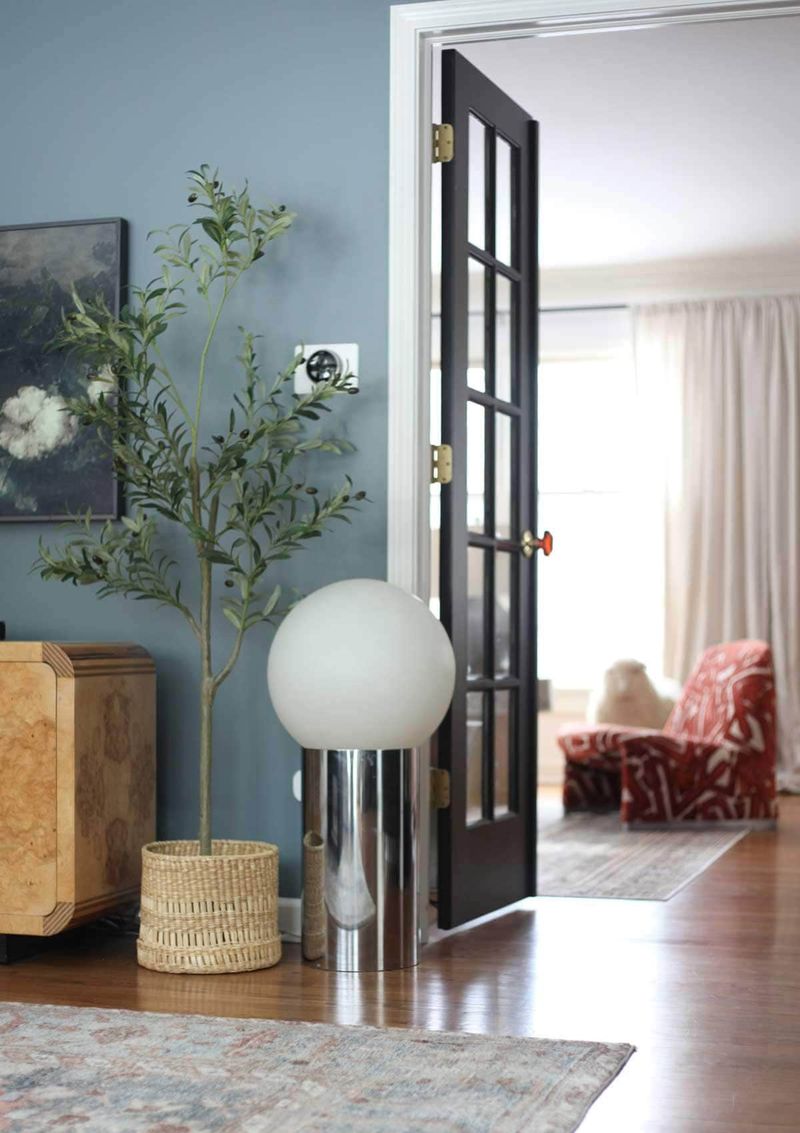
Those dusty, plastic monstrosities fooling absolutely nobody are designer kryptonite. Cheap artificial plants with their unrealistic colors and plastic sheen scream “I don’t care enough to water something living!”
If you can’t maintain real plants, designers recommend high-quality faux options that actually mimic nature. The good ones have variable coloring, realistic textures, and proper proportions.
Better yet, try low-maintenance living plants like snake plants or ZZ plants that thrive on neglect. Your space deserves better than dollar store greenery!
5. Too Many Throw Pillows
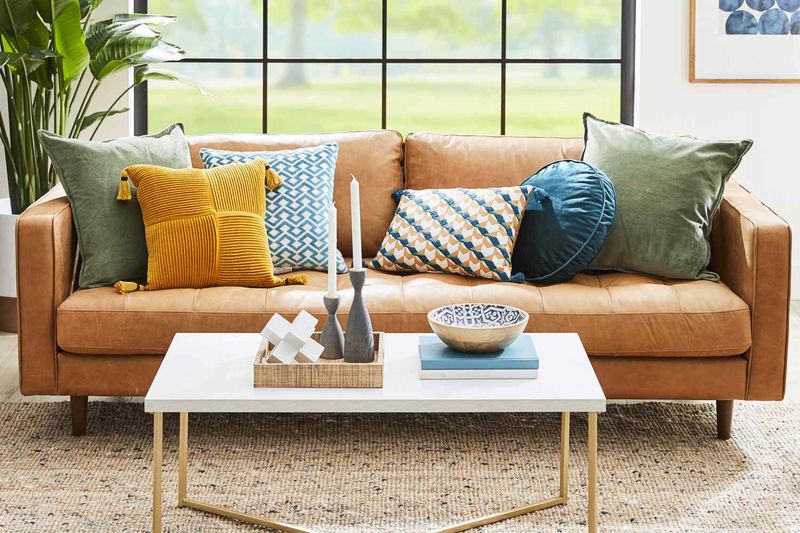
Pillow mountains that require excavation equipment before sitting down are a designer pet peeve. Your sofa isn’t a display shelf for every accent pillow that caught your eye!
Quality trumps quantity when it comes to throw pillows. A few well-chosen options with interesting textures or patterns make more impact than twenty generic ones.
Designers typically recommend 2-5 pillows per sofa, depending on size. Remember: your guests shouldn’t need to perform a pillow removal ceremony before they can actually sit down.
6. Themed Decor Overload
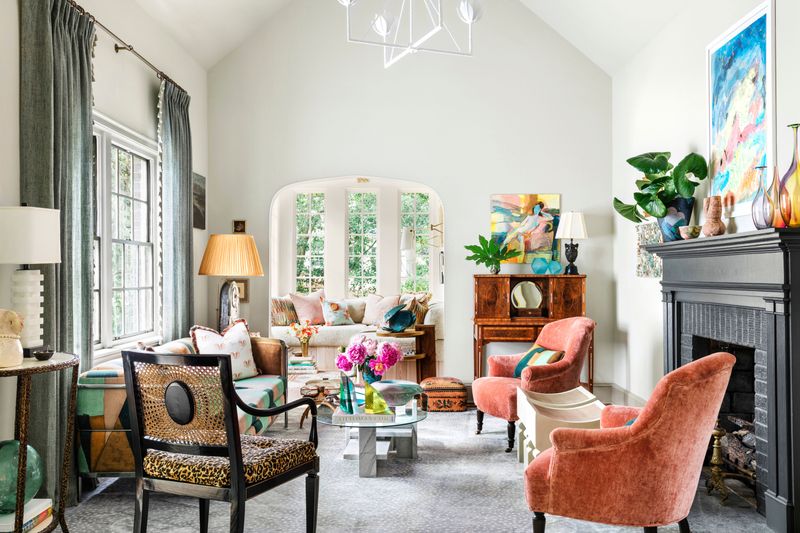
Designers break out in hives when they see rooms that look like theme park attractions. Your beach-themed living room doesn’t need seashells on every surface, rope on everything, and 17 signs that say “Beach This Way.”
Subtle nods to favorite themes work better than all-out assaults on good taste. One beautiful coral sculpture says “I appreciate coastal style” much more elegantly than dolphin-printed everything.
Good design whispers; it doesn’t shout with a megaphone while wearing a costume. Your home should reflect your personality, not hit visitors over the head with it.
7. Furniture Blocking Windows
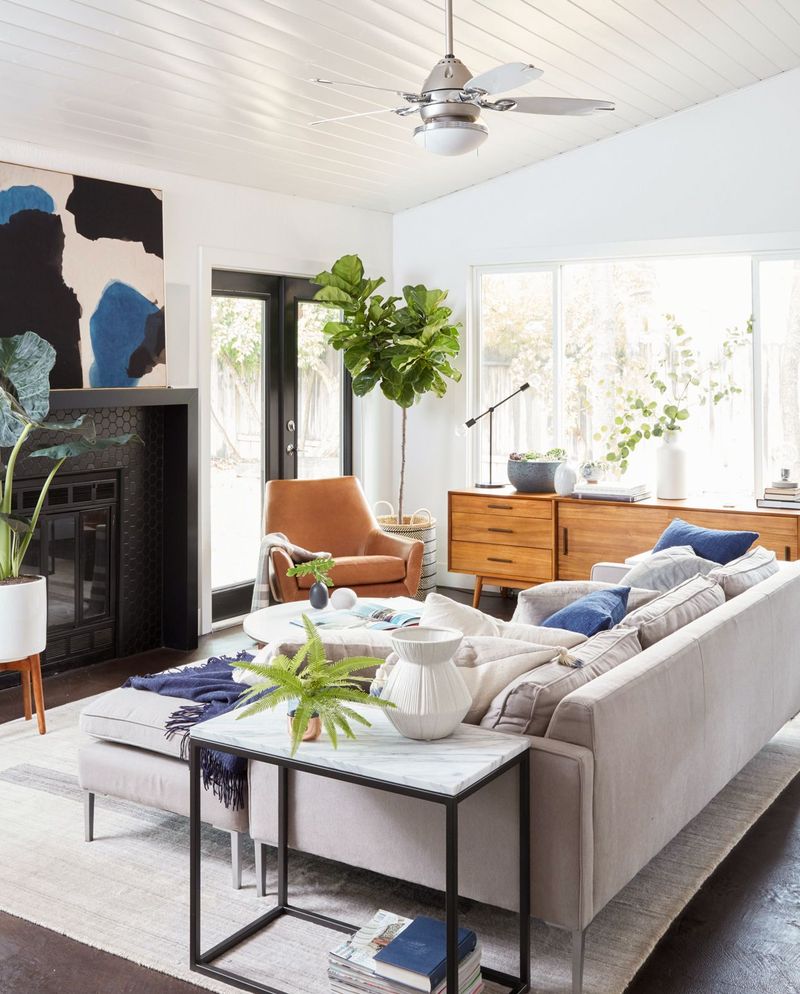
Placing sofas or tall bookcases directly in front of windows makes designers want to flip tables in frustration. Natural light is precious design gold – why would you block it with furniture?
This rookie mistake not only reduces light but disrupts the architectural integrity of your space. Windows are meant to be focal points, not backdrops for furniture.
Designers arrange seating to complement window placement, not compete with it. Let that sunshine in! Your mood, your plants, and your electricity bill will all benefit from maximizing natural light.
8. TV As Room Centerpiece
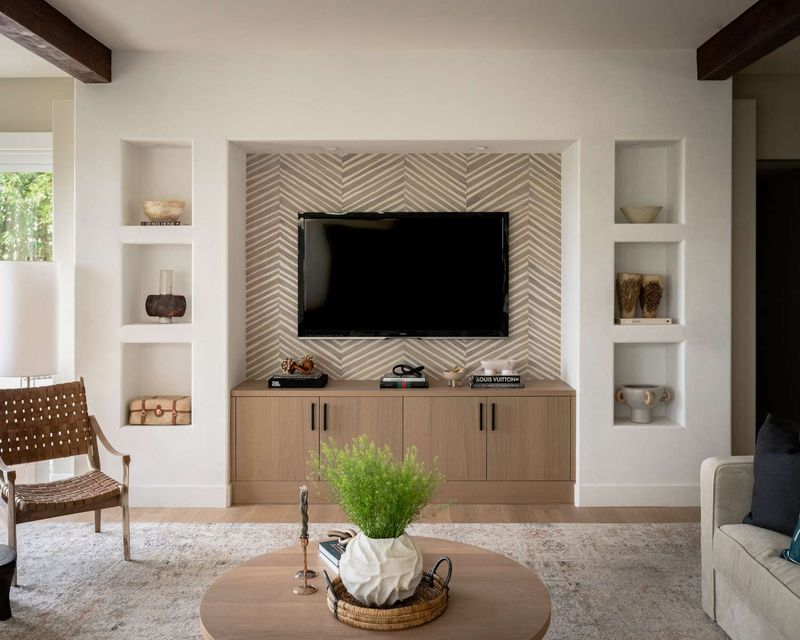
Making your television the undisputed star of your living room is a design sin that makes professionals cringe. Your space shouldn’t bow down to the black rectangle like it’s an altar.
Thoughtful designers create balanced rooms where conversation, not Netflix, is the main activity. This doesn’t mean banishing TVs entirely – just integrating them thoughtfully.
Consider solutions like gallery walls around the TV, placing it in a cabinet, or using a projector screen that disappears when not in use. Your living room should feel like a place for living, not just viewing.
9. Pushed-Back Perimeter Furniture
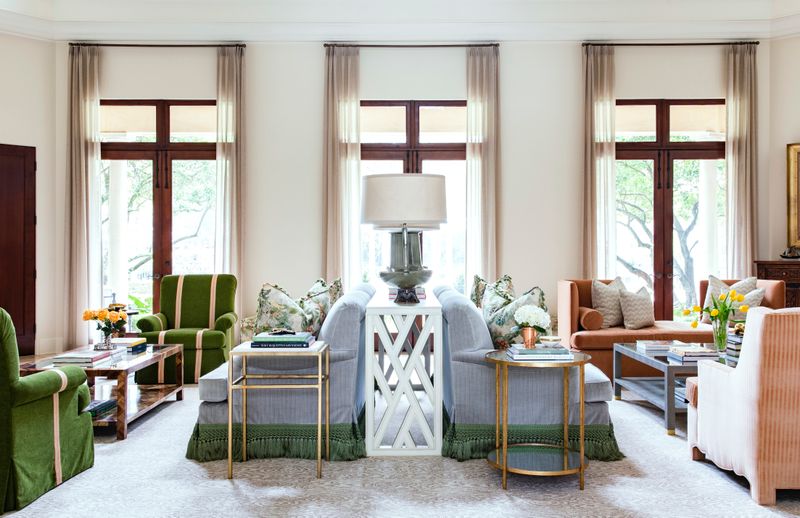
The “high school dance” furniture arrangement – where all pieces cling nervously to the walls – makes designers want to scream. This timid approach wastes the middle of your room and creates awkward shouting distances between seats.
Professional designers pull furniture away from walls to create intimate conversation groupings. Floating your sofa or creating a room-within-a-room layout makes spaces feel purposeful and cozy.
Be brave! Let your furniture mingle in the middle of the room. Your social gatherings and visual flow will improve dramatically when you stop treating your walls like security blankets.

